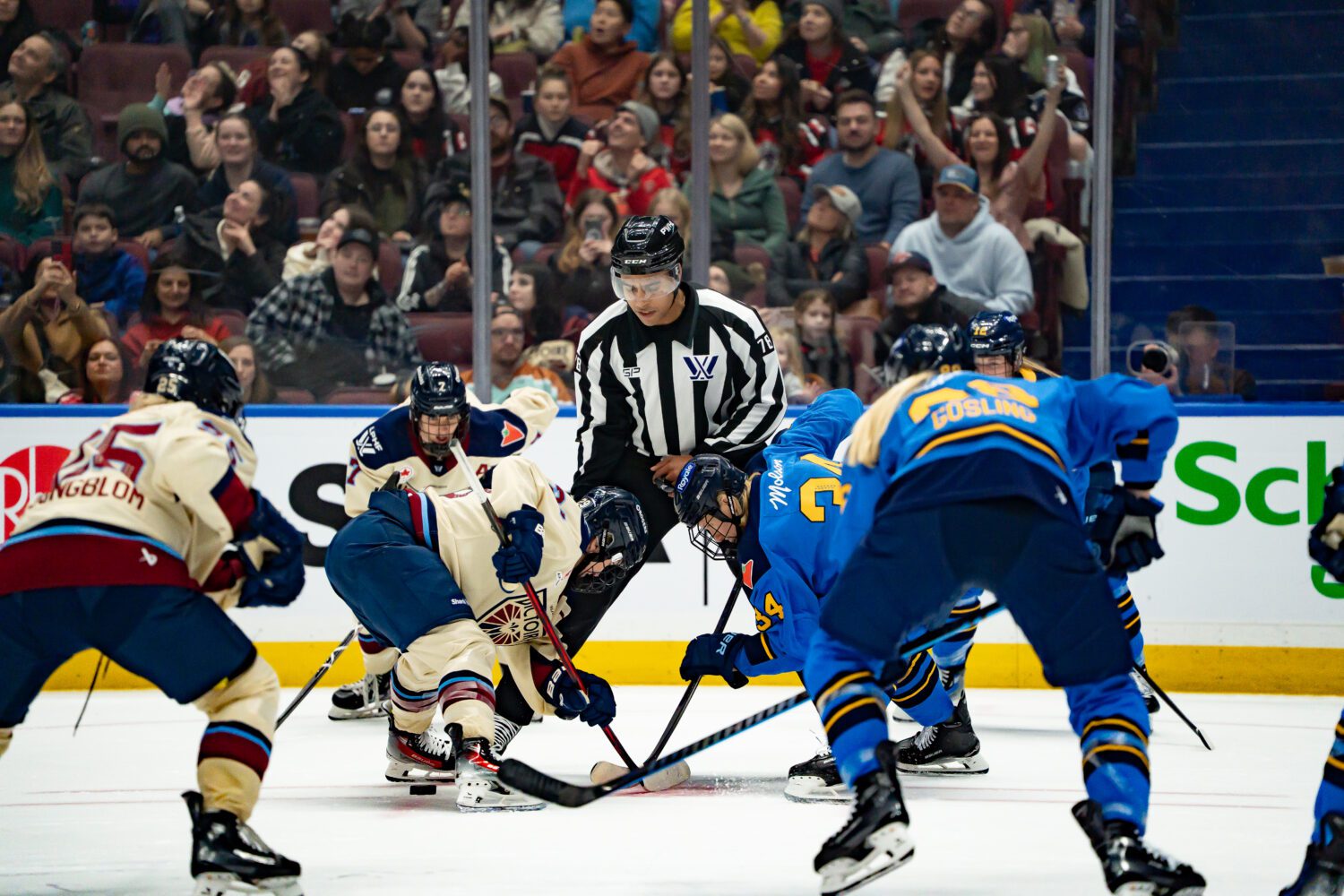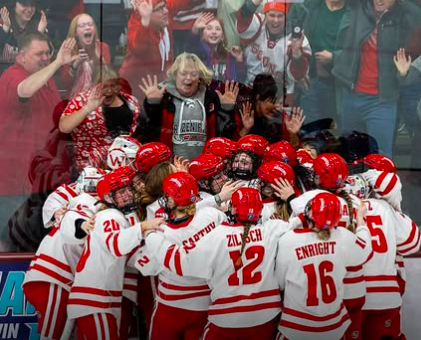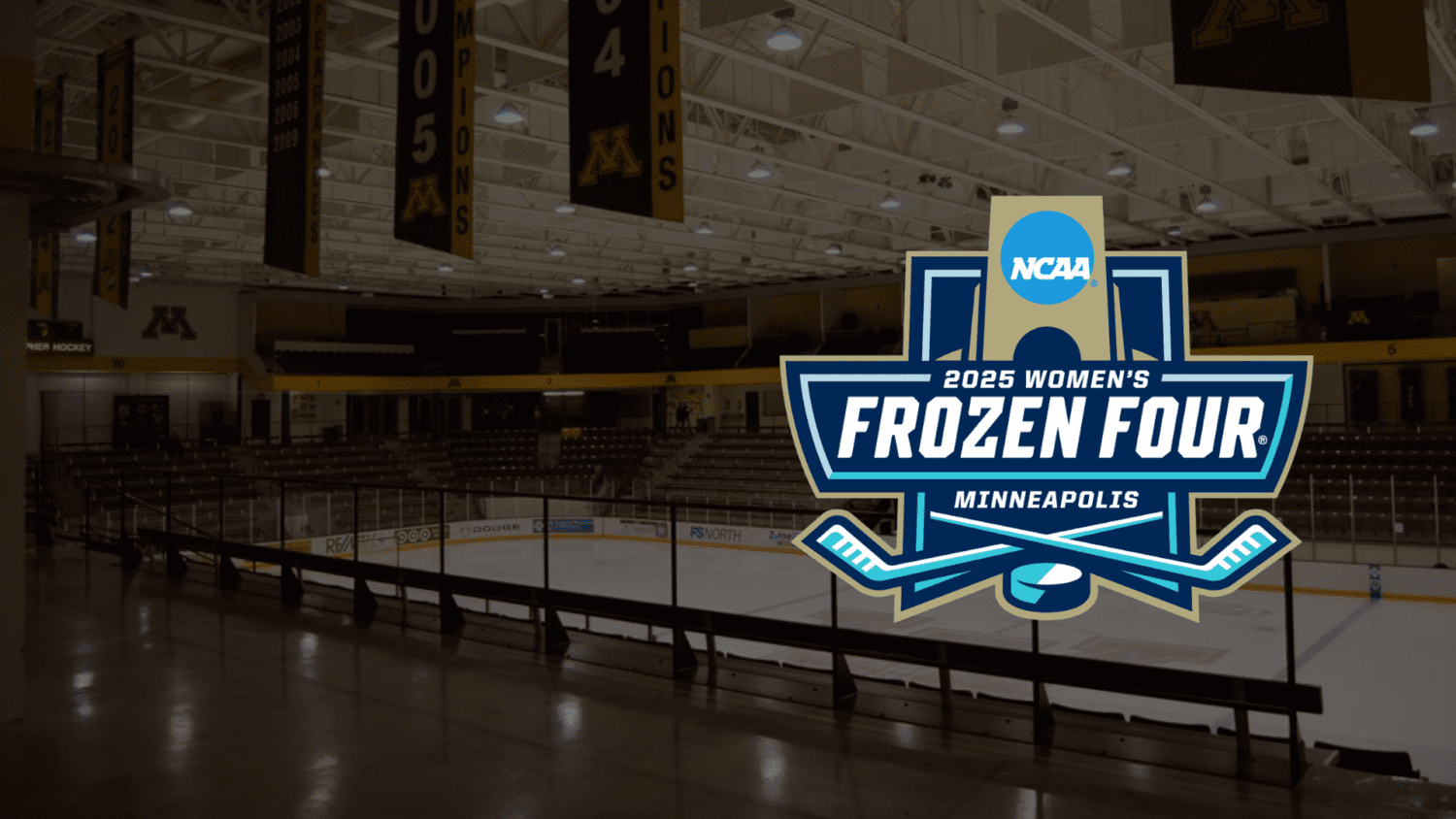The outrage over the IIHF’s decision to cancel the U18 Women’s World Championships for the second year in a row is justified, and justified only because, for the second year in a row, the closest-equivalent men’s tournament, (IIHF only has “adult” and “U18” divisions for females, unlike its “adult,” “U20,” and “U18” divisions for men) was allowed to proceed. Both years, the reason given for the cancellation of the women’s tournament was concerns about COVID, and therefore, about player welfare.
The Internet and social media have been awash with incredulity (and, in some cases, mansplained justification) for the inequity of allowing the men’s tournament to proceed while pulling the plug on the women’s—incredulity of “…but, women’s hockey is GROWING!” and justification of “…but women’s hockey doesn’t bring in MONEY!”
(I am not going to debate the revenue argument here, but let’s keep in mind that there are many sports such as fencing, weightlifting, rowing, speed skating which have annual championships and proceed despite their history of not generating substantial revenue, either. But back to my point. . .)
Let’s cut the crap and address the most apparent reason the women’s tournaments are more likely to be cancelled. The IIHF (and hockey and most sports in general) has a well-documented history of paternalistic prejudice and benevolent sexism. The website www.understandingprejudice.org defines benevolent sexism as “a chivalrous attitude toward women that feels favorable but is actually sexist because it casts women as weak creatures in need of men’s protection.”
In international hockey, women are under the protection of the wise men of the IIHF who look out for female health and safety. Of the 15 members of the IIHF’s governing Council, 13 are males, and the Chairs and vast majority of members of both the Medical Committee and the Player Safety Committee are also male. The IIHF has said that this year’s women’s U18 tournament was cancelled due to COVID concerns related to the rapid spread of the Omicron variant, but is it only a health and safety issue for females? Apparently the IIHF believes so.
This is a blatant illustration of benevolent sexism. This is the same mentality that used to ban military women from participating in combat. This is the same mentality that decrees women should be the first on lifeboats or out of a burning theater. This is the same mentality that prompts a well-meaning person to offer help to a woman with heavy boxes while that same person would be less quick to offer that same help to a male. This is the same mentality that inclines male shoppers to ask if I need help when I am browsing the tool aisle at the hardware store.
If you are still not convinced of the benevolent sexism of the IIHF, their official rulebook provides other examples. Cancelling the women’s tournament but allowing the men to play seems to be quite consistent with their overall paternalistic approach to the women’s game.
Look into the Equipment section, subsection 9.7 Facial Protection, and you will learn about the various forms of facial protection permitted. However, there is a link to Rule 202 Mens [sic] Junior Hockey Specific [sic] Equipment. Follow the link and you will learn that, for males, “All Players participating in the Under 20 age category must wear at least a visor as a face-protection.” It is not unless a male player is under 18 that he must wear full facial protection. But also linked from subsection 9.7 is Rule 102 – Womens [sic] Hockey Specific [sic] Equipment, which will take you to the part of the rulebook where we learn that all female players, regardless of age, “. . . must wear a full-face protection (full-visor, or cage facial protection), properly fixed to the helmet.”
But why? There is no reason given. Why can’t an adult female Olympian who is 31 years old choose whether or not to wear full-face protection, but a 19-year-old male can choose to wear only a visor? Without an explanation, I am left to speculate, and so I shall…
The wise men of the IIHF must want to ensure that all those hockey-playing lassies keep their faces undamaged and pretty for the boys! After all, we women probably will never be able to get full-time paying jobs playing hockey, so we will want to be looking spiffy to attract husbands who can support us! No self-respecting career man would want to marry a gal with marks of errant sticks and pucks on her pretty li’l face!
Further examination of the IIHF rulebook enlightens us that adult women players “…must wear the ear-protection, attached to their helmets.” While this is the same for any male players under 20, it is not mentioned for adult men at all, anywhere in the book. I do understand requiring protection for youth (who may not have the maturity to make an informed decision), but, again, without any explanation for why adult women can’t make their own choices about this equipment, I am left to assume that the paternalistic IIHF would like to be sure that we women have our hearing abilities intact so that we can respond to the summons of our husbands when they verbally command us to make them sandwiches and bring them beers!
Rule 101 covers specific rules for women’s hockey, but there is only one specific rule, which is the confusingly-worded “Illegal Hit in Women’s Hockey.” The text of the rule reads:
In Women’s Hockey “bodychecking” is allowed when there is a clear intention of playing the puck or attempting to “gain possession” of the puck with the exception from the situation described in the rule “illegal hit”.
If two (2) Players are in pursuit of the puck, they are reasonably allowed to push and lean into each other provided that “possession of the puck” remains the sole object of the two (2) Players.
A Player that is checking an opponent described in this rule will be assessed [a penalty]. . .
And then the section goes on to list penalties for checking.
Among other guidelines, an additional paragraph states that “If two (2) or more Players are competing for ‘possession of the puck’, they are not allowed to use the boards to make contact with an opponent to eliminate her from the play, push her into the boards, or pin her along the boards.” And another warns that “Any move by a Player to step or glide into an opposing Player will be assessed at least a Minor Penalty (2’) for an ‘illegal hit.’” There is no reference to “illegal hit” in any other section of the rule book (other than “illegal hit to the head”), so it is clearly a contrivance purely for the women’s game.
Again, we have the virtuous male protectors of femininity decreeing that we must safeguard women from damage. Without an explanation for this discrepancy between rules for men and women, and if one activity is acceptable violence for men but not for women, I am left to assume that this rule exists to protect women’s reproductive organs so they are able to bear children, like a twisted Hand-Maid’s-Tale take on hockey.
Is checking dangerous or not? If it is dangerous, it shouldn’t be in the game at all for any age group or gender. If it isn’t dangerous, shouldn’t it be part of the women’s game? I mean, no one is forcing women to play hockey. If they know checking is part of the game, shouldn’t they be able to decide if they want to play a sport with that level of physical contact?
Is it dangerous to play without full facial and ear protection or not? If it is dangerous, everyone should be wearing full facial protection (which, incidentally, is my opinion), and if it isn’t dangerous, shouldn’t adults be able to decide what level they wish to wear regardless of their gender?
And finally, is it dangerous to hold a tournament with the Omicron variant spreading like wildfire? If it is, then tournaments should be cancelled, regardless of the gender of the participants and regardless of the participant’s locations or health status.
I am not sure which better summarizes the IIHF’s troubling and inconsistent approach to player welfare—their paternalistic refusal to allow adult women to make their own decisions about the health and safety of their own bodies, or the apparent belief that men don’t require or deserve the same regulated safety protocols as women.
Feature Image: IIHF
[adrotate group=”1″]
Related Articles
Categories
Recent Posts
[adrotate group=”2″]










